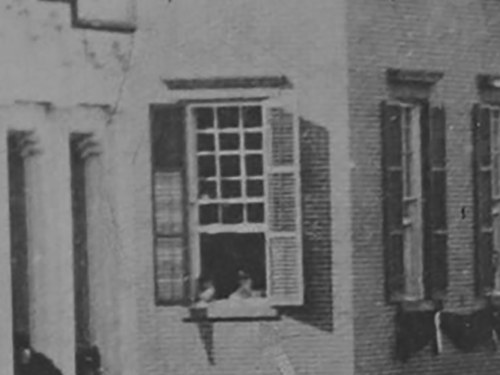History does not happen in a vacuum. When editing manuscripts at the South Dakota Historical Society Press, we often come across connections between famous, and infamous, events or individuals. For example, did you know that—according to legend—there is a photograph that captures both Abraham Lincoln and Theodore Roosevelt even though their presidencies were separated by thirty-six years?
While editing an upcoming biography of Abraham Lincoln by historian Richard W. Etulain, the first in the forthcoming Mount Rushmore subseries of the South Dakota Biography series, I was reminded that Lincoln and Roosevelt had more in common than their appearance together on Mount Rushmore. Both men influenced the development of the West in various ways. Lincoln championed the Homestead Act of 1862 and other land-use legislation that affected white settlement in the region. He also appointed the first government officials in Dakota Territory, including his wife’s cousin, John B. S. Todd, and his family doctor, William Jayne. You can read all about his connections to the region this fall when Etulain’s book comes off the press. Meanwhile, back to coincidences and chance encounters.
On the night of 14 April 1865, John Wilkes Booth shot Lincoln as he attended a play at Ford’s Theater in Washington, D.C. Nine hours later, Lincoln succumbed to the head wound, making him the first president to be assassinated in United States history. The news of Lincoln’s death initiated a wave of mourning throughout the northern United States. To help Americans grieve, officials planned a lengthy funeral procession.
 A train carrying Lincoln’s casket traveled 1,654 miles through seven states and made 180 stops before arriving in Springfield, Illinois, for the president’s burial on 4 May 1865. At each stop, mourners were allowed to pass his open casket, with some waiting up to five hours to pay their respects. During its stop in New York City on 25 April, the funeral procession made its way to the corner of Broadway and Union Square, passing the house of Cornelius van Schaack Roosevelt, grandfather of the future president. At that moment, someone photographed the convoy, including a view of the Roosevelt residence. In the second story window, two children can be seen watching for Lincoln’s hearse. According to family lore, they are six-year-old Theodore and his younger brother Elliott.
A train carrying Lincoln’s casket traveled 1,654 miles through seven states and made 180 stops before arriving in Springfield, Illinois, for the president’s burial on 4 May 1865. At each stop, mourners were allowed to pass his open casket, with some waiting up to five hours to pay their respects. During its stop in New York City on 25 April, the funeral procession made its way to the corner of Broadway and Union Square, passing the house of Cornelius van Schaack Roosevelt, grandfather of the future president. At that moment, someone photographed the convoy, including a view of the Roosevelt residence. In the second story window, two children can be seen watching for Lincoln’s hearse. According to family lore, they are six-year-old Theodore and his younger brother Elliott.
As history would have it, over sixty years later, Gutzon Borglum, the carver of Mount Rushmore National Memorial, would choose Roosevelt and Lincoln to be immortalized in stone, side by side.
—Michael Burns
At top, Lincoln’s funeral procession passes the Roosevelt home (corner building at left). Theodore Roosevelt Birthplace National Historic Site.

